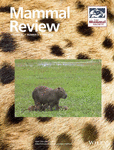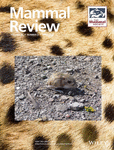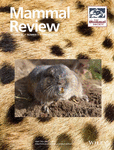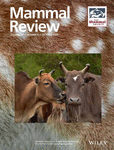Edited by: Robyn Grant
Mammal Review is a leading mammalogy journal, covering all aspects of mammalian biology and ecology. As the official scientific periodical of The Mammal Society, our aim is to provide international researchers with the resources they need to prevent native mammal extinction globally.
The scope of the journal includes behavioural ecology, biogeography, conservation, ecology, ethology, evolution, genetics, human ecology, management, morphology, and taxonomy. We welcome analytical reviews of current theoretical and applied research, practical assessments of study techniques, and large-scale considerations of the status, conservation and management of mammals.
Journal Metrics
- 12.5CiteScore
- 4.4Journal Impact Factor
- 32%Acceptance rate
- 20 days Submission to first decision
Introducing our new Editor-in-Chief and Assistant Editor

Editor-in-Chief: Robyn Grant
Robyn is a Reader in Comparative Physiology and Behaviour at Manchester Metropolitan University. She is a Sensory Biologist specialising in the vertebrate sense of touch, especially focussing on whisker touch sensing in mammals. Robyn addresses fundamental questions about the form and function of mammalian touch sensing. She leads a programme of public engagement and is passionate about inspiring others to get involved in research in mammal biology. See her profile page here.

Assistant Editor: Antonio Uzal
Antonio Uzal is an Associate Professor of Conservation Biology at Nottingham Trent University. In this role, alongside lecturing, Antonio supervises and guides a group of PhD candidates as well as continuing his own research. Over the past two decades, Antonio's research has been a continuous exploration of the intricate ecological processes shaped by human activities, focusing on employing innovative techniques to monitor wild populations, particularly mammals, and crafting evidence-based conservation tools. His vision for future research is to respond to the needs of evidence-based management, policy and regulations in hunting, animal welfare, the restoration of degraded ecosystems and the mitigation of human-wildlife conflict. As a conservation biologist, he is very interested in restoration ecology as a tool to improve the resilience of ecosystems and local communities.
Articles
Wild Prey and Livestock Predation by Native Carnivores: A Global Review
- 17 July 2025
Graphical Abstract
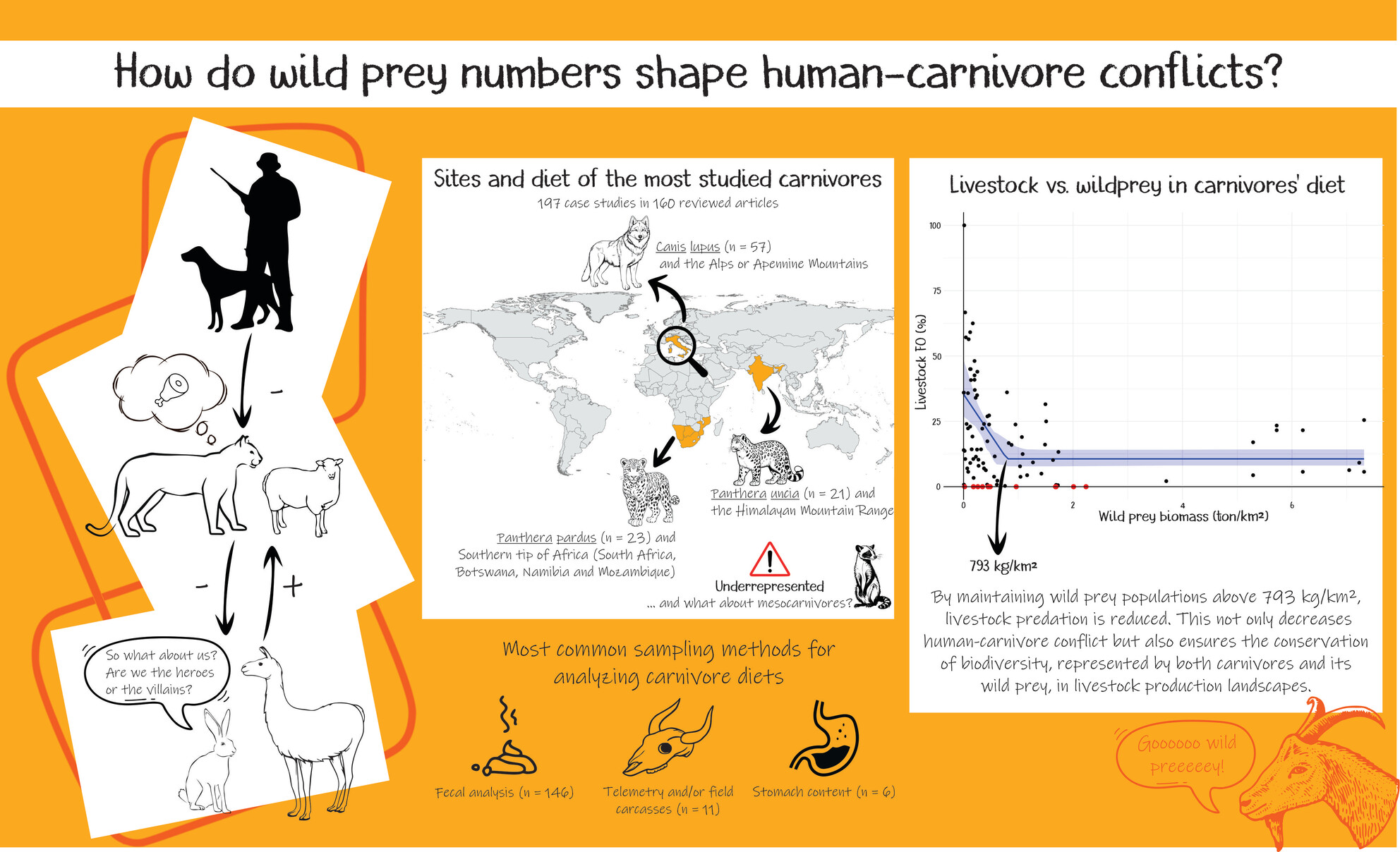
Livestock predation by wild carnivores poses a significant conservation challenge. Our systematic review of carnivore diets showed that wild prey abundance is crucial for reducing livestock attacks. Maintaining wild prey above 793 kg/km2 can reduce predation on livestock, aiding in carnivore conservation and reducing conflict in livestock landscapes.
Measuring Personality in Wild Small Mammals: A Review of Methods and Proposal for a Standardised Approach
- 14 July 2025
Question the Mark: A Review and Assessment of Bat Marking Practices
- 13 July 2025
Graphical Abstract
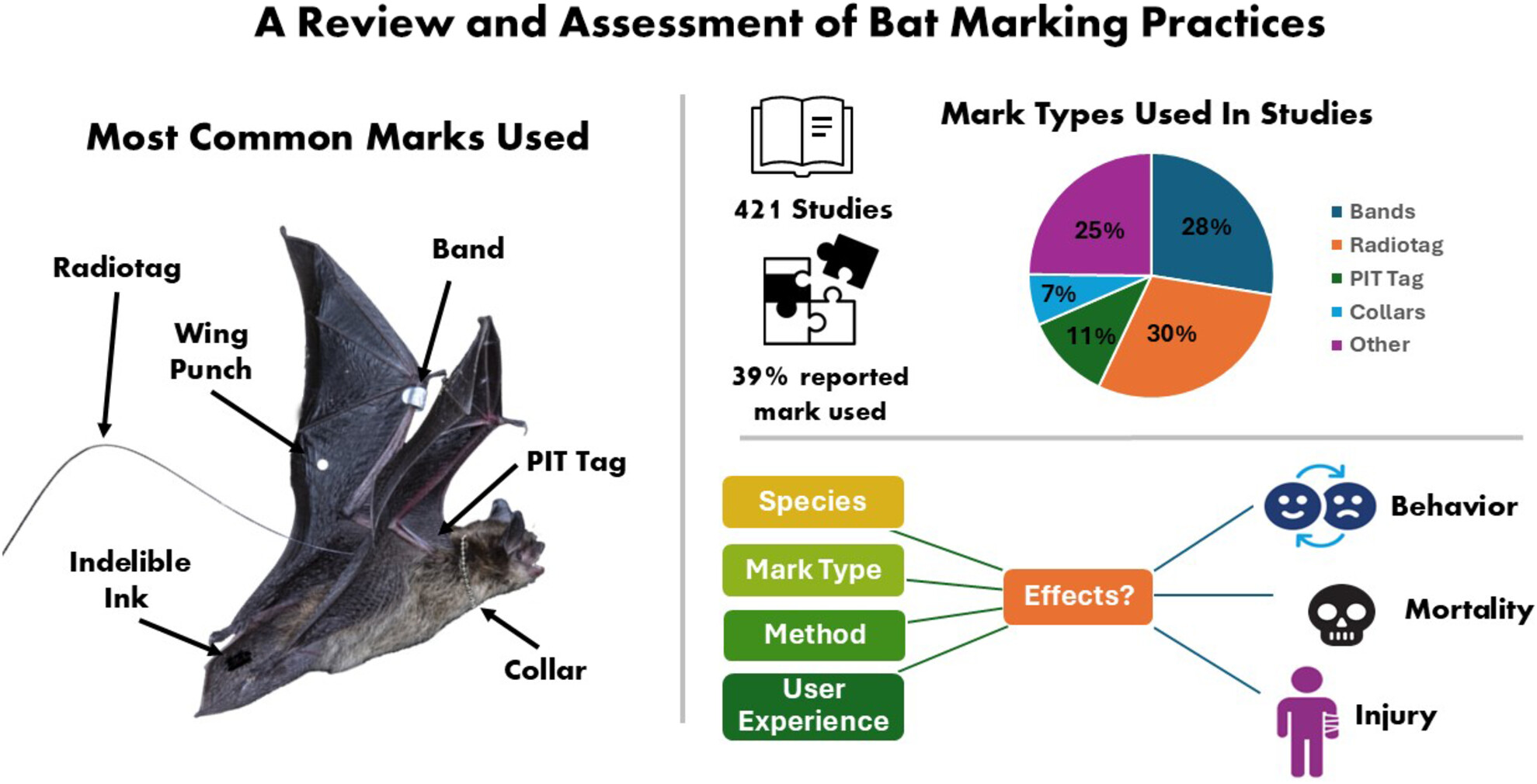
We reviewed a decade of research on bats and conducted a broader systematic review to assess the nature of bat marking practices and the effects and efficacy of marks. Effects of marks on bats, mark details and marking procedures are rarely reported and further research on the effects of marks on bats and more thorough reporting are needed.
Frugivory by the Crab-Eating Fox (Cerdocyon thous) and Its Seed Dispersal Potential: A Review
- 16 June 2025
Graphical Abstract
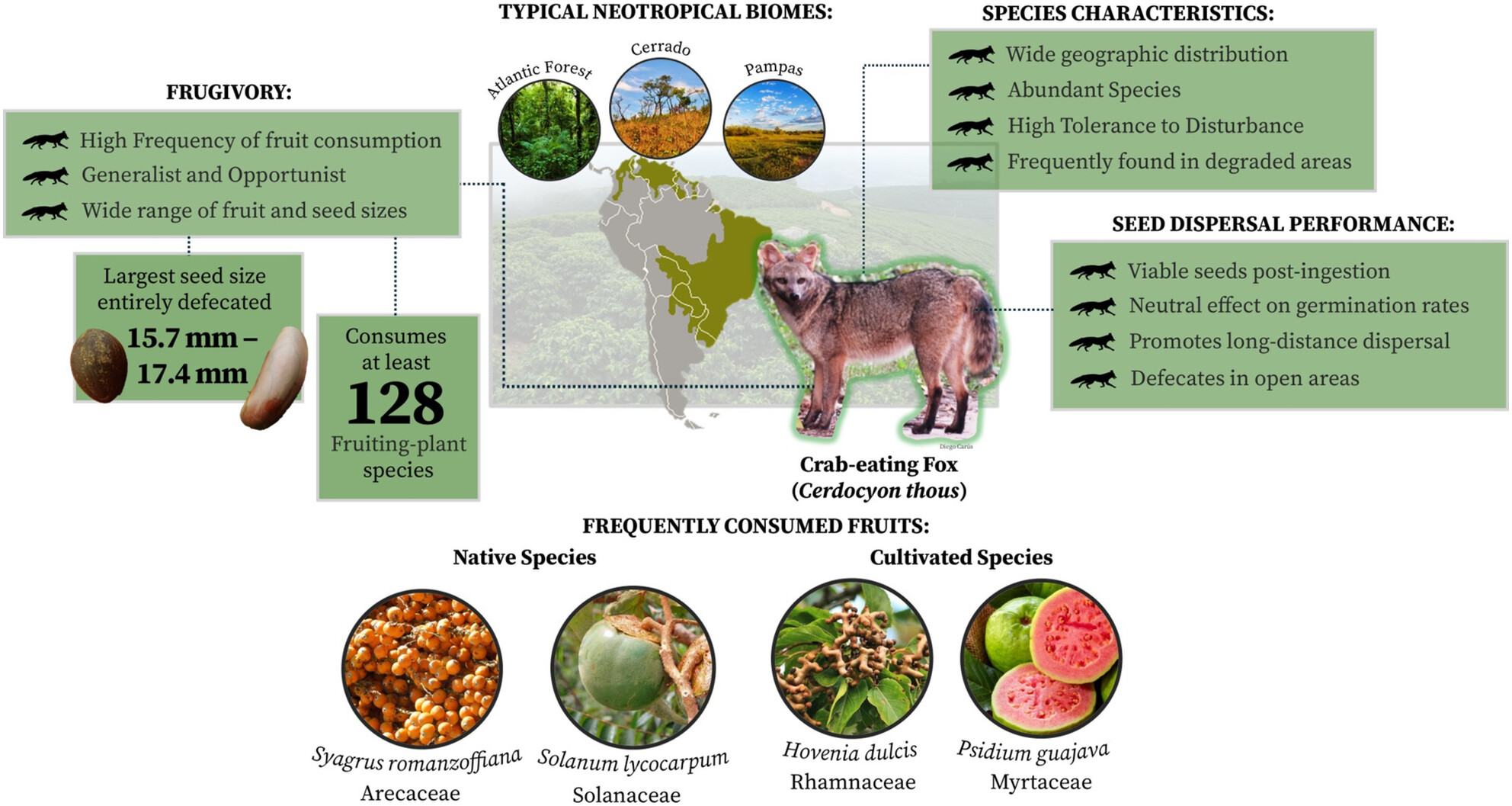
The crab-eating fox (Cerdocyon thous) consumes a wide variety of fruits and is a key seed disperser in Neotropical ecosystems. Its ability to disperse viable, large seeds and promote long-distance dispersal, especially in disturbed areas, highlights its important role in maintaining plant diversity.
Scat DNA Applications for Low-Density Carnivore Survey: Techniques, Efficiency and Future Directions
- 12 May 2025
Graphical Abstract
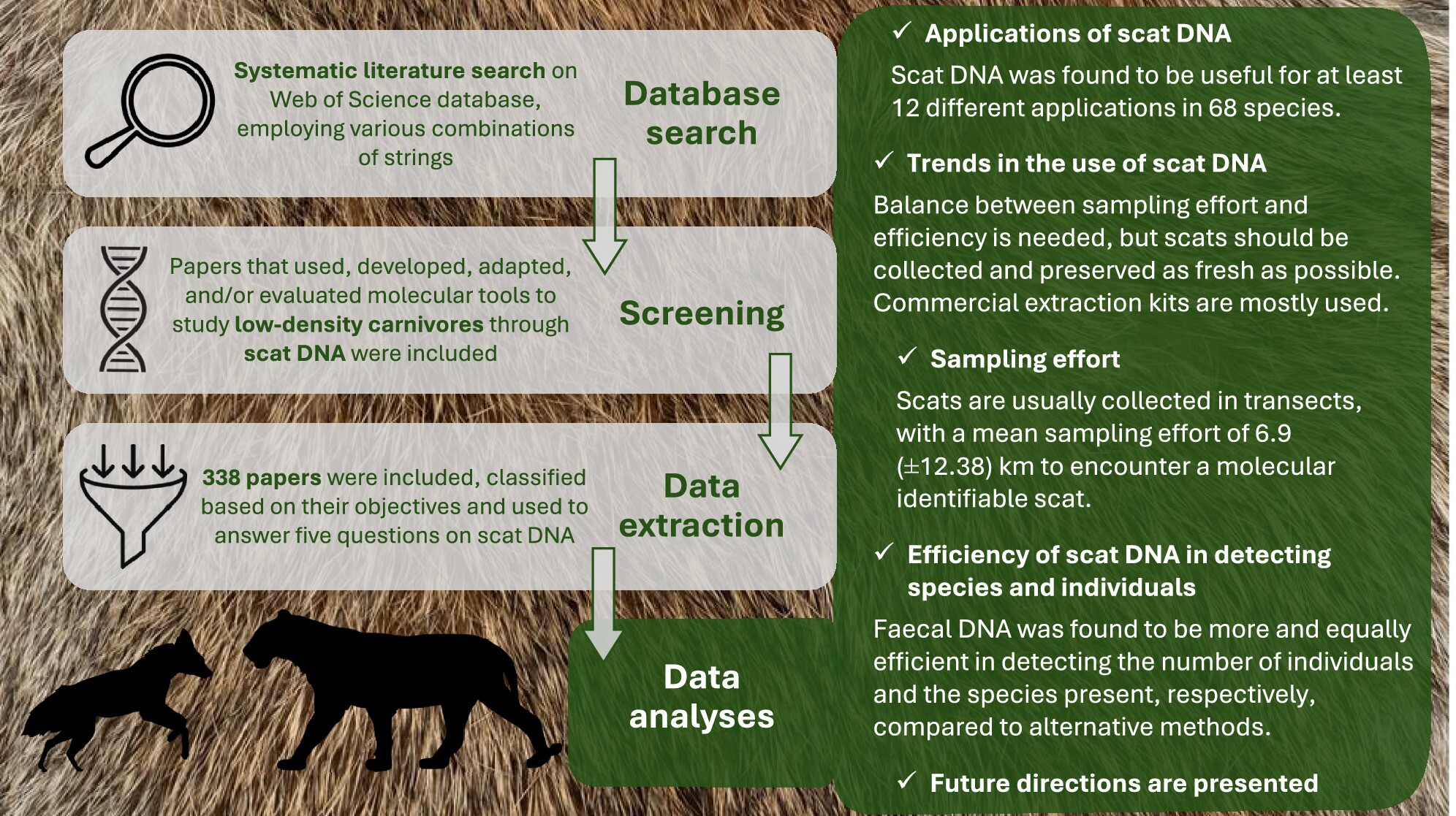
We reviewed 338 studies encompassing mostly Felidae, Canidae and Mustelidae species throughout the world, confirming scat DNA as a reliable genetic source for many applications. The findings here offer guidance for future studies on low-density carnivores, helping to design cost-effective research and improving data quality for conservation efforts.
The following is a list of the most cited articles based on citations published in the last three years, according to CrossRef.
Wild ungulate overabundance in Europe: contexts, causes, monitoring and management recommendations
- 95-108
- 20 September 2020
Graphical Abstract
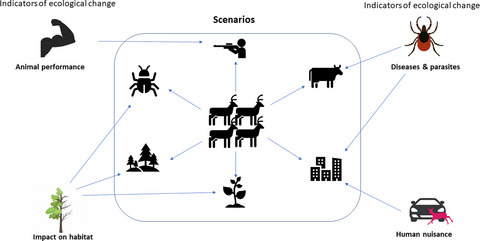
We describe six contexts of wild ungulate overabundance in Europe (protected areas, hunting areas, forestry, arable farming, livestock farming and [peri]urban areas). Protected areas are mainly devoted to conservation, where hunting of ungulates is either limited to management culling or, in a minority of cases, prohibited. Hunting areas are characterised by land where the main human activity is hunting and where hunting is carried out under commercial interests. The forestry context occurs in areas where the main land use is for forest, which is very common in northern and central Europe. The arable farming context is characterised by areas where the main land use is for growing agricultural crops. The livestock farming context occurs in land areas dedicated to animal husbandry, mainly in extensive systems, where livestock–wildlife interactions are currently frequent. Peri-urban and urban areas are characterised by built-up areas connected by roads and highways, as well as green areas composed of a mosaic of patches of various types.
Are unmanned aircraft systems (UASs) the future of wildlife monitoring? A review of accomplishments and challenges
- 239-252
- 24 August 2015
A review of wild boar Sus scrofa diet and factors affecting food selection in native and introduced ranges
- 124-134
- 31 October 2013
Overabundant wild ungulate populations in Europe: management with consideration of socio‐ecological consequences
- 353-366
- 13 July 2020
Graphical Abstract
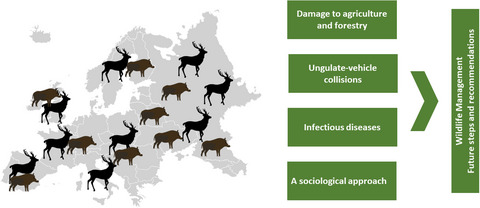
Ungulates such as red deer and wild boar have been increasing in the past decades in Europe, and so have their consequences. Damage to agriculture and forestry, emerging infectious diseases, and increasing ungulate-vehicle collisions are only some of the consequences of ungulate populations that are no longer controlled. Ungulate expansion also increases conflicts among humans, and the study of these interactions should be integrated in an holistic perspective of ecosystems. This review gives researchers and the general public a brief summary of the situation of ungulates in Europe, suggests a novel socio-ecological approach, and provides recommendations for stakeholders on how to deal with this situation, which is likely to intensify in the future.
Latest news
Recent issues
- Volume 55, Issue 3July 2025
- Volume 55, Issue 2April 2025
- Volume 55, Issue 1January 2025



